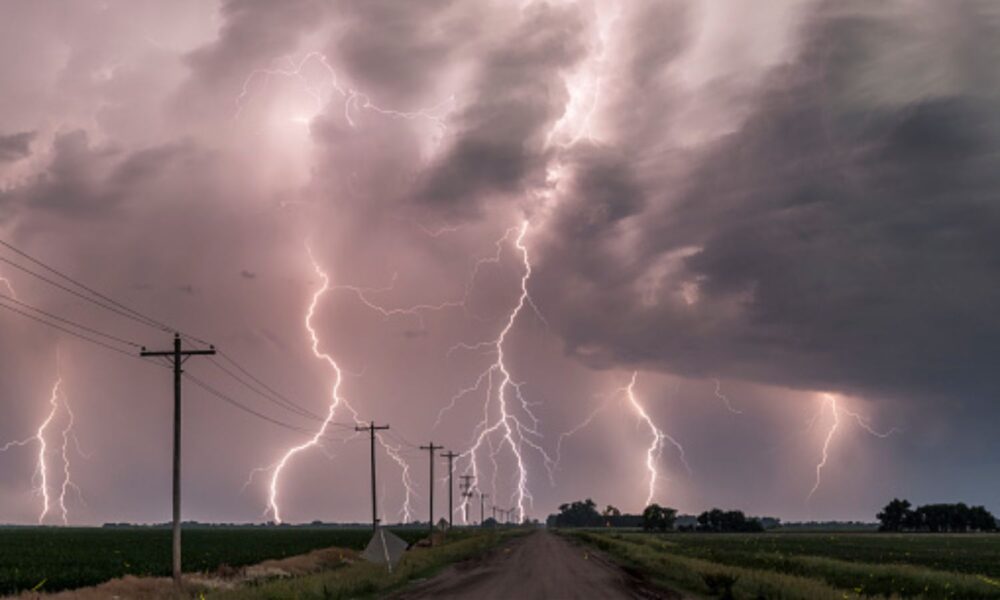Climate change is our reality these days as we navigate hotter days, more severe storms, wildfires, and other previously-rare weather extremes. The ways we have been altering our lives range from the unpleasant yet common (like having to spend more time indoors in summer due to more extreme heat days if you have, and can afford, air conditioning) to the dangerous, potentially deadly, and less frequent (like having to flee a wildfire that has engulfed your community).
We are adapting to climate change. But our infrastructure isn’t.
It seems obvious that the services we depend on like electricity should be able to withstand extreme weather, since that’s what we have more of now and will have more of in the future. You can imagine my surprise when upon receiving a request to speak at a 2022 Midcontinent Independent System Operator (MISO) meeting to consider how the entity might value the benefits of new transmission investments to avert power outages during extreme weather events, I learned that I was to be the first climate scientist to speak in this space.
MISO, which operates the bulk electric grid across the central United States—from Minnesota to Louisiana—had never actually considered (at least publicly) how its planning and transmission system investments should be informed by climate science, despite its responsibility to keep the power flowing to 45 million consumers across 15 states.
To me that was a record-scratching, stop-the-music moment. Wait, what!? You mean to tell me that not only was there no plan underway to make the energy system that serves the better part of the interior of our country resilient to climate change (climate change that’s already happening mind you), but it’s not even being talked about by the responsible entities? There was nothing in the works to ensure that our lights will be able to stay on as more severe winter storms batter the country northeast of the Rockies, as more rapidly intensifying hurricanes descend upon the Gulf Coast, and as more extreme heat burdens… virtually everywhere? Gulp.
So, I put together my presentation to try and make the case for why this is really (really, really) important for MISO to take into account. How climate scientists are extremely clear that climate change has increased the frequency and intensity of extreme heat events happening around the world, and how extreme heat days are poised to increase markedly from Wisconsin all the way down to Louisiana (which will almost certainly increase the demand for electricity as well as strain the infrastructure).
I gave examples of what can happen when our grid isn’t prepared. I talked about the severe storm that had just hit my hometown of Madison, Wisconsin in June of 2022, knocking out power for hundreds of thousands of midcontinent residents who then had to survive a few days of brutal heat without electricity. I could have gone on as there are a myriad of other climate change impacts unfolding across the country while fossil fuel driven greenhouse gas emissions continue to pervade our atmosphere.
The fact is, there is a significant body of scientific research and a plethora of analytical tools that can help system planners including MISO understand how climate change is going to impact our ability to maintain a reliable and affordable supply of electricity, as well as how to plan for and invest in an electric system that is prepared to meet the challenges posed by climate change. I was surprised that information—so critically important to carrying out legitimate risk assessments—wasn’t on the table.
My colleagues at the Union of Concerned Scientists recognized the urgency of taking this work further to ensure that the US power system is prepared for climate change – for everyone. We developed “Keeping Everyone’s Lights On: How to Build an Equitable, Climate-Resilient Power Grid” to consider how to increase the resilience of the US power system to climate change that is both already happening, as well as that which is projected for the US in the coming decades. The report focuses on the role of the often-overlooked bulk transmission system – those large, high-voltage lines that connect regions so that if an extreme weather event happens in one region, a community can draw power from elsewhere and not be left stranded. In addition, the report examines how a resilient power system means not just being able to keep the status quo, but it also means revamping how decisions are made so that all communities are valued equally.
We also make recommendations for the kind of scientific products that could help system operators, state decisionmakers, communities, and local utilities alike make better-informed decisions—including fine-scale climate projections that are available from many institutions including the U.S. government and science-based groups such as the Electric Power Research Institute (EPRI) and UCS. To enable the uptake of such tools and information, we also recommend more collaboration between climate science researchers, electricity system researchers, system planners, and decisionmakers.
Science is clear that the threats to our electricity grid from climate change are becoming increasingly serious. Now, our work is to try and get the attention of the entities responsible for this critical infrastructure. You can help by contacting your legislators and asking them to require the utility commissioners responsible for your community to take climate science into account and ensure that the infrastructure that keeps your lights on is resilient to climate change. Our safety and wellbeing depends on them doing so.

